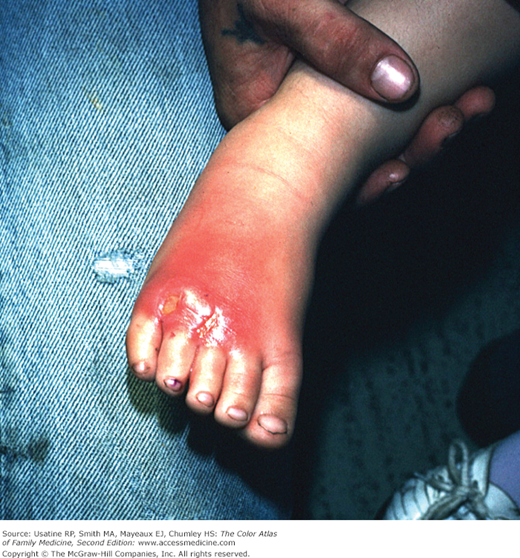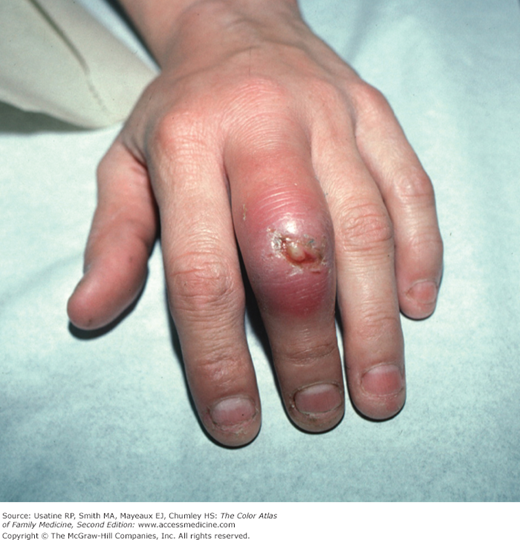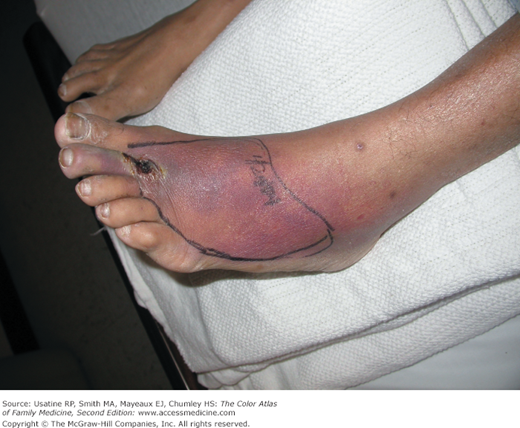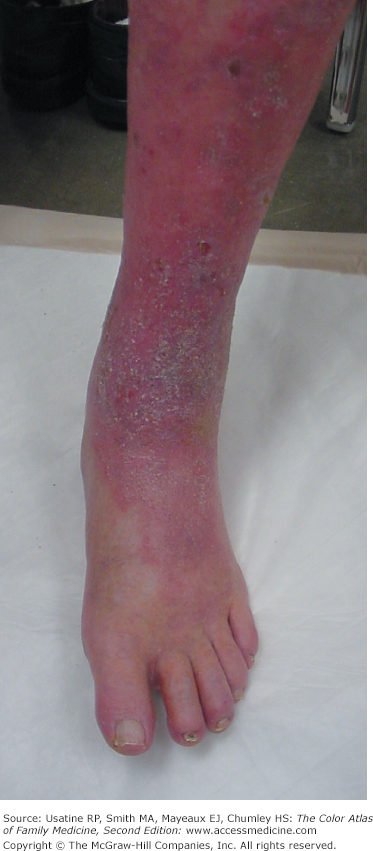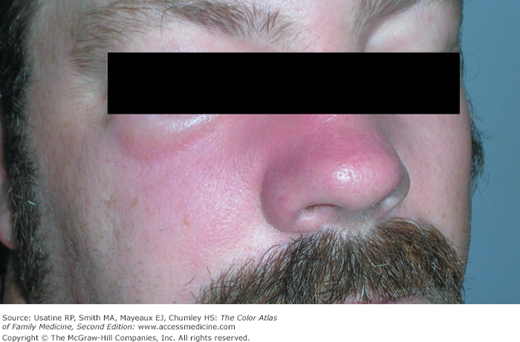Patient Story
A 4-year-old child presents with a fever and a red and swollen foot (Figure 120-1). The patient injured her foot 3 days before with a door. On physical examination, the foot was warm, tender, red, and swollen, and the child’s temperature was 39.4°C (103°F). This is classic cellulitis and the child was admitted for IV antibiotics.
Introduction
Epidemiology
Etiology and Pathophysiology
- Often begins with a break in the skin caused by trauma, a bite, or an underlying dermatosis (e.g., tinea pedis, stasis dermatitis) (Figures 120-2, 120-3, 120-4).
- Is most often caused by group A β-hemolytic Streptococcus (GABHS) or Staphylococcus aureus. The most common etiology of cellulitis with intact skin, when it has been determined through needle aspiration and/or punch biopsy, is S. aureus, outnumbering GABHS by a ratio of nearly 2:1.1
There are increasing concerns about the role of community- acquired methicillin-resistant S. aureus (MRSA) in all soft-tissue infections including cellulitis.2–5
- After a cat or dog bite, cellulitis is often caused by Pasteurella multocida.
- After saltwater exposure, cellulitis can be secondary to Vibrio vulnificus in warm climates (Figure 120-5). A Vibrio vulnificus infection can be especially deadly.
Figure 120-5
Fatal Vibrio vulnificus infection with widespread cellulitis and bullae. The violaceous bullae should be a red flag for this infection and/or necrotizing fasciitis. Even though the infection was identified early, the overwhelming sepsis resulted in death. (Courtesy of Donna Nguyen, MD.)
Erysipelas is a specific type of superficial cellulitis with prominent lymphatic involvement and leading to a sharply defined and elevated border (Figure 120-6).
